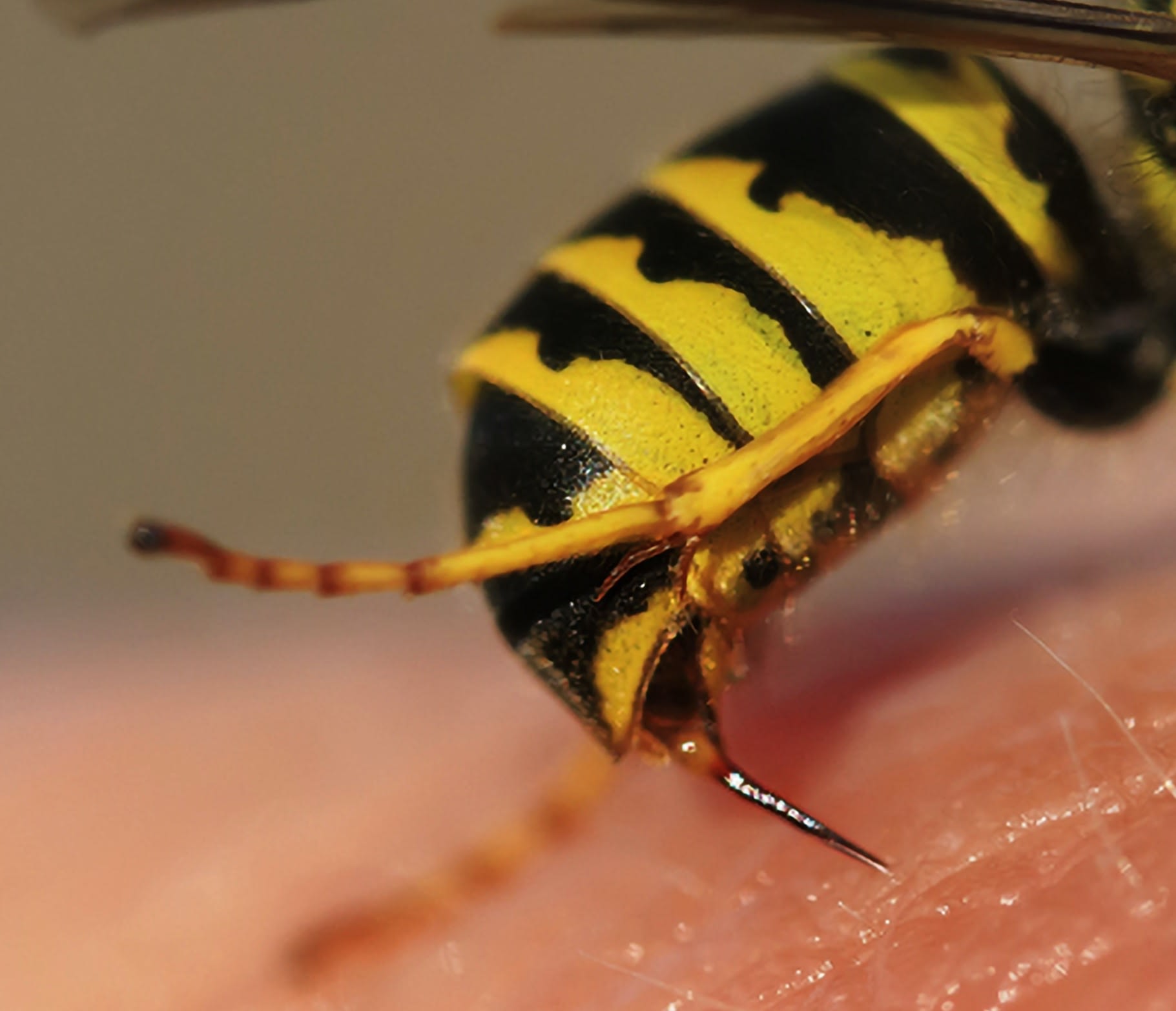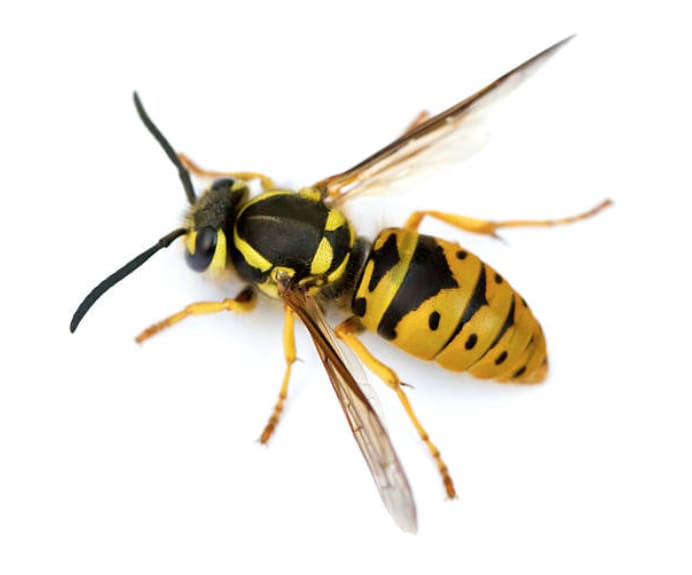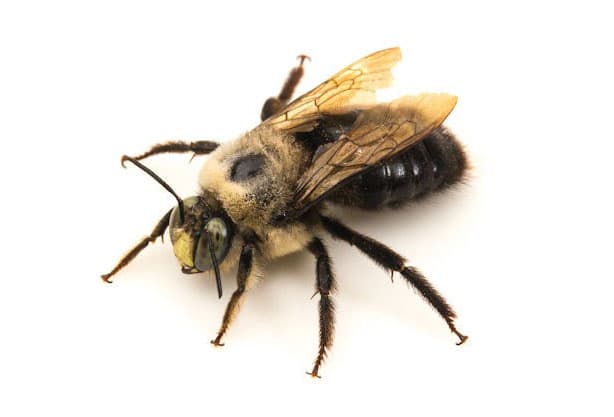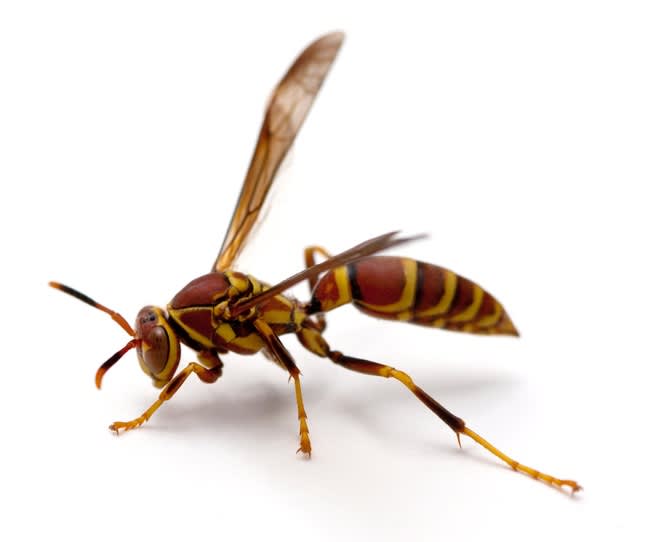
Stinging Insects: Yellow Jackets vs. Honey Bees
At Bee Removal Specialist we have over 40 years of service and experience in the bee service industry. Many people ask what is the difference between a bee and wasp? When it comes down to it, they are very different yet still have some similarities.
Yellow Jacket Wasps vs. Honey Bees

Yellow Jacket Appearance
Yellow Jackets are a type of wasp that has a bright yellow color to them, they are smooth with a slender abdomen. They are faster and longer, a great advantage when hunting for food. This should help when trying to identify that insect around your home.

Honey Bee Appearance
Honeybees are not smooth and have fuzz all around their body, this fuzz helps collect pollen to bring back to the hive. They have a darker golden brown to them than other insects. They are not as thin and generally a little bigger with shorter antennas.

Yellow Jacket Sting
With a smooth stinger and extremely aggressive nature, yellowjackets can sting more than once without dying. Not only do they sting but they bite their prey to tear the flesh apart to make it easier for taking it back to the hive.
The venom from a yellowjacket sting is stronger, the pain will go on for hours leaving the area swollen. You cannot remove the stinger because it never detaches from the yellowjacket. Easiest way to reduce the pain is washing the area and applying a cold compress.

Honey Bee Sting
Unique to the honeybee alone, they carry a sac of venom that is attached to their stinger. These stingers have barbs that act like fishhooks, making it harder to remove.
The sac is left behind with the stinger to keep pumping venom into the target, but the honeybee dies shortly after. The barbed stingers are easy to remove if you drag it out. Do not pinch or all the bee venom will be released, some people will show a reaction to a bee sting, others will not.

Yellow Jacket Nest
The yellowjacket nest is made from wood fiber turned into a paper like-material. They do not store honey; they build underground or in a secure area that is covered for example a weep hole. The average nest can hold up to 5,000 wasps at a time. Nesting sites are hard to find since they choose anywhere with a dense vegetation, abandoned holes in the ground, anywhere with an enclosed area.

Honey Bee Nest
The honeybee species are known to create honeycombs in hollowed areas where they can store honey and reproduce. These honeycombs are made from a wax that held together by propolis. Which acts like glue and can be used to keep invaders out. The average honeybee hive can contain anywhere from 10,000 to 60,000 honeybees.

Yellow Jacket Queen
The queen is easier to identify, she has bigger abdomen with dots running down. They remain hidden underground and only produce eggs. Her role is laying eggs come spring early summer, these fertilized eggs will be part of the future nest.

Honey Bee Queen
A honeybee queen is born after exclusively only being fed royal jelly in the queen cell for a period. This activates the genes for the queen bee to have reproductive ovaries. There is only one queen bee in every hive.

Yellow Jacket Diet
Yellowjackets are known to be attracted to anything sweet, fruit, and the nectar from flowers. The main distinguishing factor is that yellow jackets are carnivores. They look for a higher source of protein and meat from smaller insects, picnics, and garbage. They will only go about 1 mile from the nest to collect food.

Honey Bee Diet
The food process of the honeybee starts by collecting pollen and nectar which can be made into a variety of food sources depending on the bee process. If a larva is chosen to be a queen, then she will be given royal jelly exclusively, other larvae will receive beebread that is high in protein. The last food source that everyone knows is honey! Bees prefer to fly around 5 miles near the area to pollinate.

Yellow Jacket Natural Predators
The skunk is one of the main predators for a yellowjacket. They can find the nest and dig at it. The praying mantis is also known to eat the wasps flying around. Bears have a thick skin, that they do not feel the stingers, making a yellowjacket nest one of the best snacks they can find.

Honey Bee Natural Predators
The crab spider as seen in the picture is known to wait near a flower for a bee to come along and attack. Hive beetles are also known to come into a beehive to infiltrate and disturb their food source.









